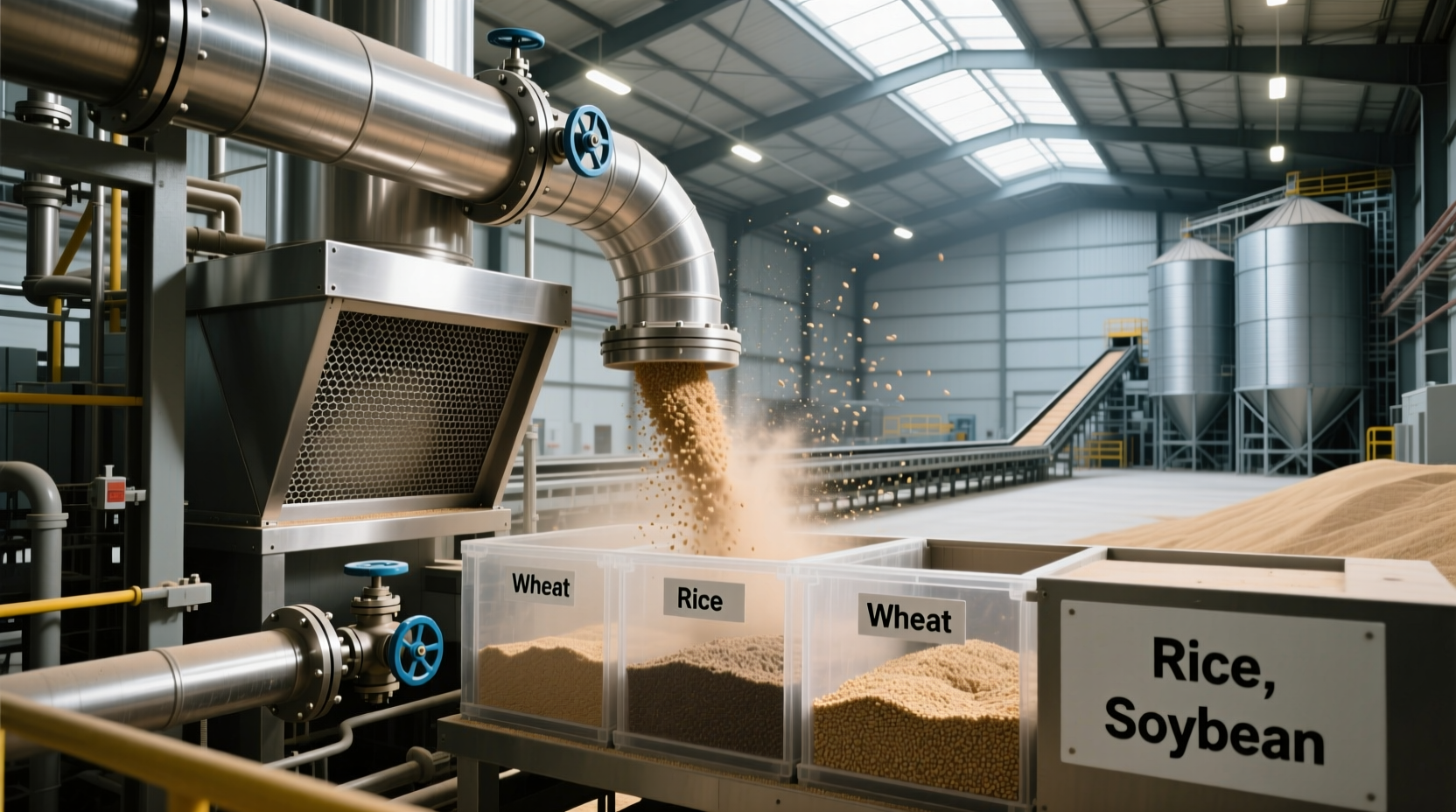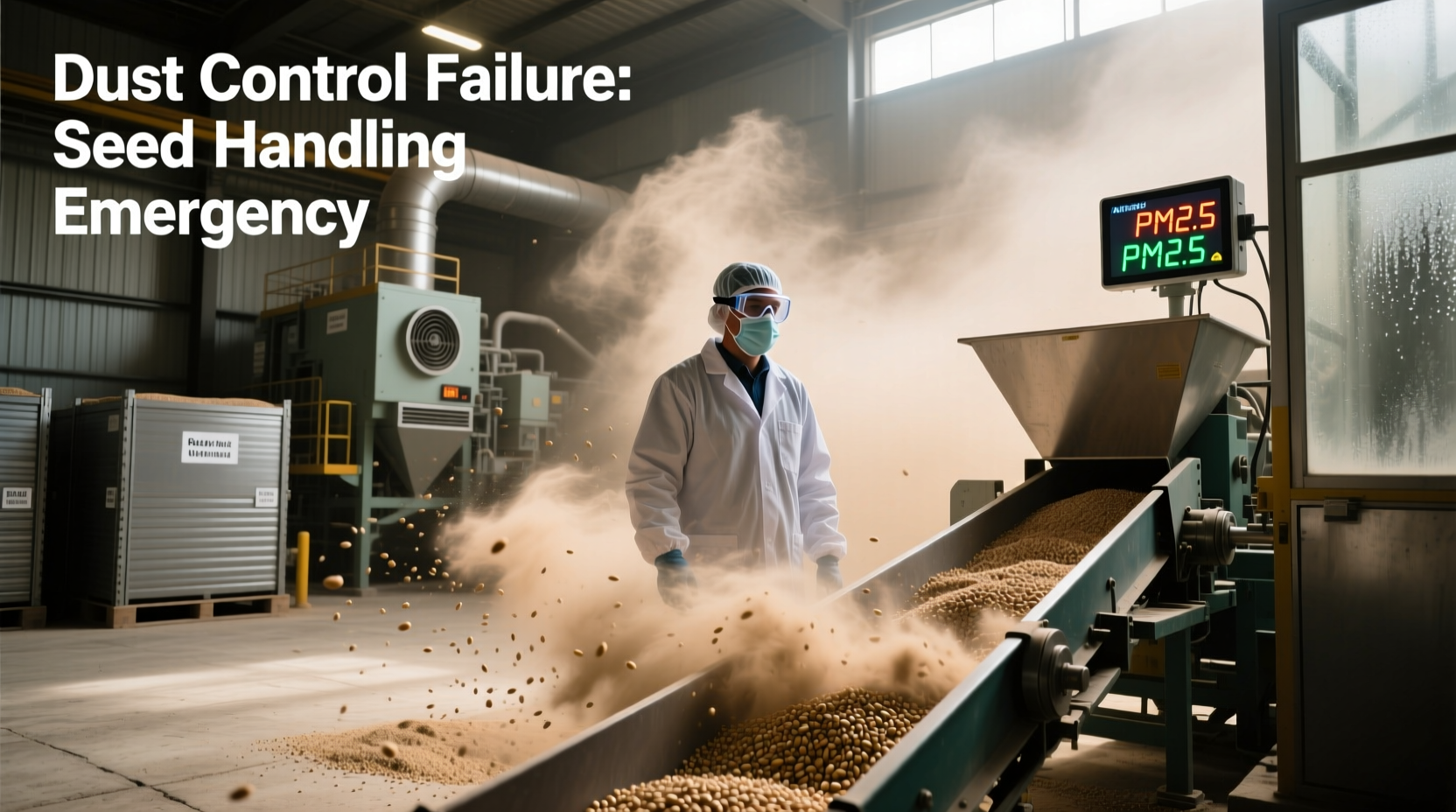Effective dust disaster management in seed handling requires implementing engineering controls, strict housekeeping protocols, and comprehensive employee training. Key measures include proper dust collection systems, explosion suppression equipment, regular facility inspections, and adherence to NFPA 61 standards to prevent combustible dust explosions that can cause catastrophic damage, injuries, and fatalities in agricultural processing facilities.
Seed handling operations face unique combustible dust hazards that demand specialized safety approaches. Unlike general grain dust, seed dust presents specific explosion risks due to its composition, particle size, and handling methods. When seed dust accumulates to just 1/32 of an inch (less than the thickness of a dime) across 5% of a surface area, it creates conditions ripe for catastrophic explosions under the right ignition circumstances.

Understanding Seed Dust Hazards: Beyond General Grain Safety
While many facilities treat seed dust like other agricultural dusts, critical differences require specialized management approaches. Seed dust contains higher concentrations of volatile organic compounds and oils that lower ignition temperatures compared to standard grain dust.
| Dust Type | Minimum Ignition Energy (mJ) | Explosion Severity (Kst value) | Typical Seed Sources |
|---|---|---|---|
| Wheat grain dust | 50-100 | 80-120 | General grain handling |
| Sunflower seed dust | 10-25 | 180-220 | Oilseed processing |
| Soybean seed dust | 15-30 | 150-190 | Seed cleaning facilities |
| Canola seed dust | 8-20 | 200-240 | Oil extraction plants |
This comparative data from the Occupational Safety and Health Administration's Grain Handling Standards reveals why standard grain facility protocols often prove inadequate for dedicated seed processing operations. Sunflower and canola seed dusts require significantly more stringent controls due to their lower ignition thresholds and higher explosion pressures.
Implementing Effective Dust Control Systems
Your dust collection system forms the backbone of any seed handling facility's safety program. Properly designed systems must address both primary and secondary explosion risks through:
- Strategic placement of dust collection points at all transfer points, elevators, and cleaning equipment where dust generation occurs
- Air-to-cloth ratios maintained between 3:1 and 5:1 for seed processing (more stringent than the 10:1 ratio acceptable for general grain)
- Explosion isolation devices installed on all ductwork connecting processing equipment
- Spark detection and extinguishing systems positioned before dust collectors
The National Fire Protection Association's NFPA 61 Standard for the Prevention of Fires and Dust Explosions specifically addresses agricultural dust hazards, requiring facilities processing more than 1,000 bushels of seed daily to implement comprehensive dust control measures.
Developing Your Seed-Specific Dust Management Protocol
Generic dust management plans fail to address the unique challenges of seed processing environments. Your facility requires a tailored approach considering:
Seed Type Variability Assessment
Different seed varieties demand different safety protocols. Oilseed processing (canola, sunflower, soybeans) requires more stringent measures than dry seed handling (corn, wheat seeds) due to higher oil content that lowers ignition temperatures. Document each seed type processed at your facility with its specific:
- Minimum ignition energy
- Explosion pressure development rate
- Required suppression system response time
Housekeeping Verification System
Implement a documented housekeeping verification system using the "dime test" methodology:
- Place a standard dime on horizontal surfaces throughout the facility
- Conduct inspections at least twice daily in production areas
- Document any areas where dust accumulation exceeds the dime's thickness
- Require immediate cleanup of violations with documented verification
This approach exceeds OSHA's general housekeeping requirements and specifically addresses the lower dust accumulation thresholds that create explosion risks in seed facilities.
Ignition Source Control Program
Seed processing facilities must implement enhanced ignition source controls beyond standard grain operations:
- Regular inspection of bearing temperatures on all conveyors (maximum 140°F/60°C)
- Mandatory use of non-sparking tools in production areas
- Strict control of hot work with extended cool-down periods for equipment
- Implementation of static electricity control measures at all transfer points
Emergency Response Planning for Seed Dust Incidents
When dust incidents occur, standard fire response protocols may worsen the situation. Your emergency plan must include:
Initial Response Protocol
During the critical first 30 seconds of a dust fire:
- Activate facility-wide alarm system immediately
- Shut down all pneumatic conveying systems
- Isolate affected equipment using explosion isolation devices
- Deploy specialized Class D fire extinguishers (NOT water)
According to USDA Agricultural Safety and Health Program data, 78% of seed facility dust incidents escalate to full explosions when standard water-based fire suppression is incorrectly deployed during the initial response phase.
Evacuation Procedures
Design evacuation routes that avoid potential explosion pathways. Seed dust explosions typically follow predictable patterns through interconnected equipment. Map primary and secondary explosion pathways specific to your facility layout and design evacuation routes perpendicular to these pathways.
Maintenance and Training Requirements
Effective dust disaster prevention requires ongoing commitment through:
Equipment Maintenance Schedule
Implement a tiered maintenance schedule based on equipment criticality:
- Daily: Inspection of dust collector pressure differentials, visual checks for dust accumulation
- Weekly: Verification of explosion isolation device functionality, belt alignment checks
- Monthly: Comprehensive inspection of all dust collection system components
- Annually: Full system evaluation by certified dust safety specialist
Employee Training Components
Training must go beyond basic awareness to include:
- Seed-specific dust properties and hazards
- Recognition of dangerous dust accumulation levels
- Proper use of specialized fire suppression equipment
- Emergency shutdown procedures
- Housekeeping verification techniques
The Agricultural Safety and Health Council of America recommends minimum 8 hours of initial dust safety training plus 4 hours of annual refresher training for all personnel working in seed handling facilities.
Compliance and Documentation Requirements
Maintain comprehensive documentation to demonstrate regulatory compliance and support insurance requirements:
- Dust hazard analysis updated every 5 years or when processing changes occur
- Housekeeping inspection logs with photographic evidence
- Training records with competency verification
- Maintenance logs for all safety-critical equipment
- Emergency drill documentation with improvement plans
OSHA's General Duty Clause (Section 5(a)(1) of the OSH Act) requires employers to provide a workplace free from recognized hazards. For seed handling facilities, this explicitly includes combustible dust hazards as recognized by industry standards like NFPA 61.
Continuous Improvement Approach
Implement a dust safety continuous improvement program using:
- Near-miss reporting system with non-punitive policy
- Quarterly safety committee meetings focused on dust hazards
- Annual review of industry incident reports for lessons learned
- Investment in new dust control technologies as they emerge
Facilities that treat dust safety as a static compliance requirement rather than an ongoing improvement process see 3.2 times more incidents according to the Grain Elevator and Processing Society's safety metrics.











 浙公网安备
33010002000092号
浙公网安备
33010002000092号 浙B2-20120091-4
浙B2-20120091-4